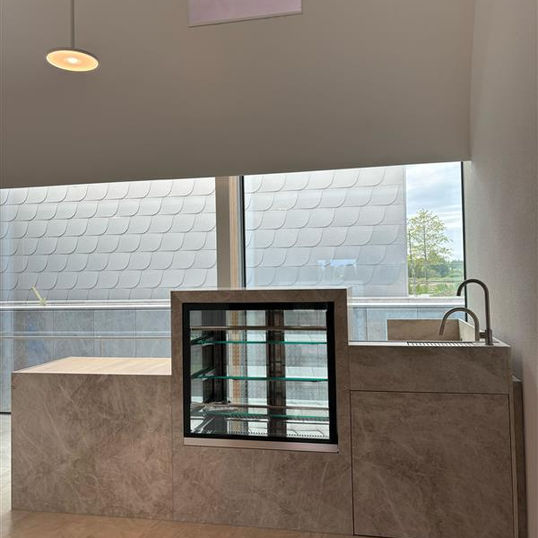Visiting Museum
Education
Explore
Inside the Exhibition
The Shtetls
Education
Stories About Shtetls
Collections
Events
Visiting Museum
Education
There are a few audio guide stations in the cemetery with stories and information.
-
Achillea millefolium ‘Lilac Beauty’, lilac beauty common yarrow
-
Anemone nemorosa, wood anemone
-
Athyrium filix-femina, lady fern
-
Calamagrostis × acutiflora ‘Karl Foerster’, Karl Foerster feather reed grass
-
Carex morrowii, Japanese sedge
-
Carpinus betulus, European hornbeam
-
Convallaria majalis, lily of the valley
-
Cornus alba ‘Sibirica’, Tatarian dogwood
-
Galanthus nivalis, snowdrop
-
Helleborus viridis, green hellebore
-
Hydrangea paniculata ‘Tardiva’, Tardiva panicle hydrangea
-
Knautia arvensis, field scabious
-
Knautia macedonica, crimson pincushion
-
Luzula nivea, snowy woodrush
-
Luzula sylvatica, greater wood-rush
As visitors approach the museum building, the landscape gradually shifts in scale—from the expansive wetlands and fields to the more intimate garden spaces nestled between the museum volumes. These gardens serve as a reinterpretation and abstraction of the traditional village gardens found in Lithuanian Shtetls, where wooden and brick houses were often framed by charming yards filled with flowers and trees. The carefully curated plant palette reflects the typical flora of Shtetl gardens, establishing a subtle yet meaningful connection to their heritage.

There are a few audio guide stations in the cemetery with stories and information.

Wood Anemone
Anemone nemorosa
This delicate wildflower has white, star-shaped petals with a yellow centre. Its slender stems rise above finely divided green leaves, creating a graceful carpet in early spring woodlands.
Credits: fietzfotos / Pixabay nuotr.

‘Karl Foerster’ Feather Reed Grass
Calamagrostis × acutiflora ‘Karl Foerster’
This ornamental grass has tall, slender stems topped with feathery, golden plumes. Its narrow, green leaves create a graceful, arching form, adding texture and movement to gardens and landscapes.
Credits: Nennieinszweidrei / Pixabay nuotr.

Snowy Woodrush
Luzula nivea
This plant features graceful clumps of narrow, grass-like leaves and airy clusters of white, starry flowers. Its blooms attract bees and provide gentle movement and texture in naturalistic gardens.
Credits: DieFia / Pixabay nuotr.

‘Tardiva’ panicle hydrangea
Hydrangea paniculata ‘Tardiva’
One of the latest hydrangeas to bloom, it features upright, sharply pointed, conical panicles. The white, sterile flowers slowly turn purplish-pink as they mature.
Credits: JACLOU-DL / Pixabay nuotr.

Crimson pincushion
Knautia macedonica
This perennial has deep crimson, pincushion like flowers held on slender, branching stems. Its soft, deeply lobed leaves form a low mound, adding rich color and a wild, airy feel to gardens.
Credits: Sonja-Kalee / Pixabay nuotr.
There are a few audio guide stations in the cemetery with stories and information.
Located on the plateau overlooking the surrounding fields, the perennial garden offers a vivid reminder of the plant diversity native to the local landscape.
The wetlands consist of a series of lakes of varying depths, surrounded by tall grasses and flowering plants.
A characteristic feature of the typical Lithuania’s rural landscape, the orchard area includes apple trees that evoke the region’s agricultural heritage.











